Among some of the best tree species to grow as a beginning bonsai enthusiast is the Cape Honeysuckle. This plant is low maintenance, beautiful, fragrant, and not terribly picky, while being a great choice for learning how to grow and shape a bonsai tree both indoors and outdoors.
Take a look below to learn the ins and outs of care for this gorgeous species and see if it might be the right choice for you.
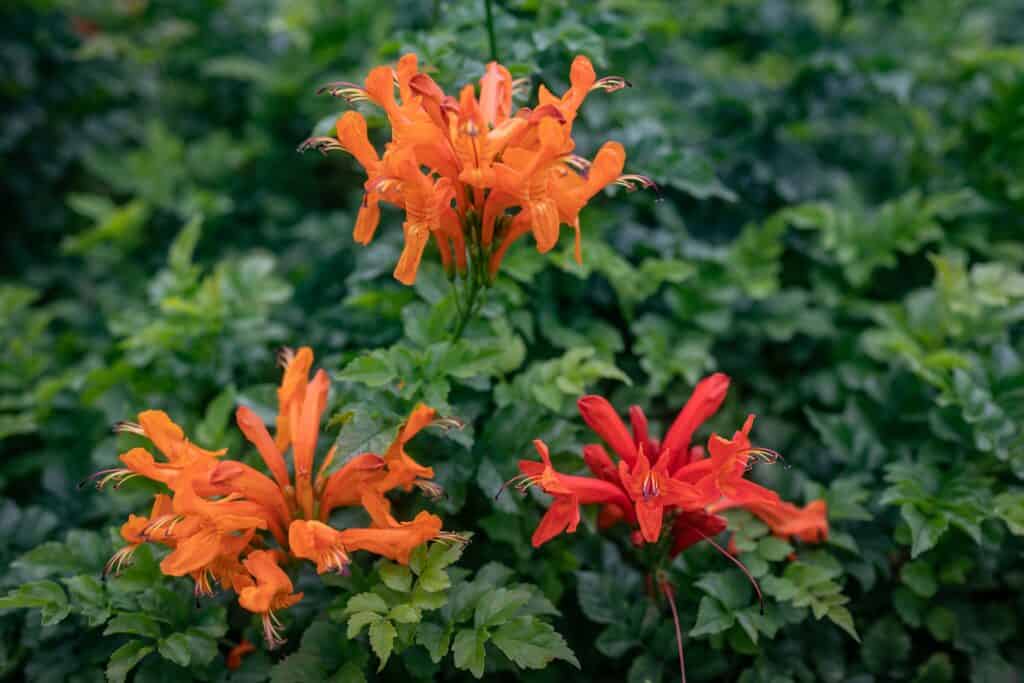
Cape honeysuckle comes in a variety of rich shades.
©Amovitania/Shutterstock.com
What Makes Cape Honeysuckle Good for Bonsai?
Cape honeysuckle are a top choice among bonsai enthusiasts for a number of reasons, the first being that they’re fairly low maintenance. This means they’re great for beginners. They’re also fast growing, do well both indoors and outdoors as bonsai, have strong, upright stems that are also flexible (good for training) and work in multiple styles, including cascade and semi-cascade. They’re also not super picky about light and soil conditions, which means inexperienced enthusiasts can afford to make a few mistakes as they learn the art with this tree.
Cape Honeysuckle Classification
The botanical name Tecoma Capensis has been assigned to the stunning, fragrant cape honeysuckle that so many flowering tree lovers embrace as a bonsai species. It’s a perennial shrub that develops in vine-like tendencies and is native to South Africa. The plant is usually considered an evergreen species but it is semi-deciduous with foliage that falls throughout colder weather in cooler climates.
Cape Honeysuckle Description
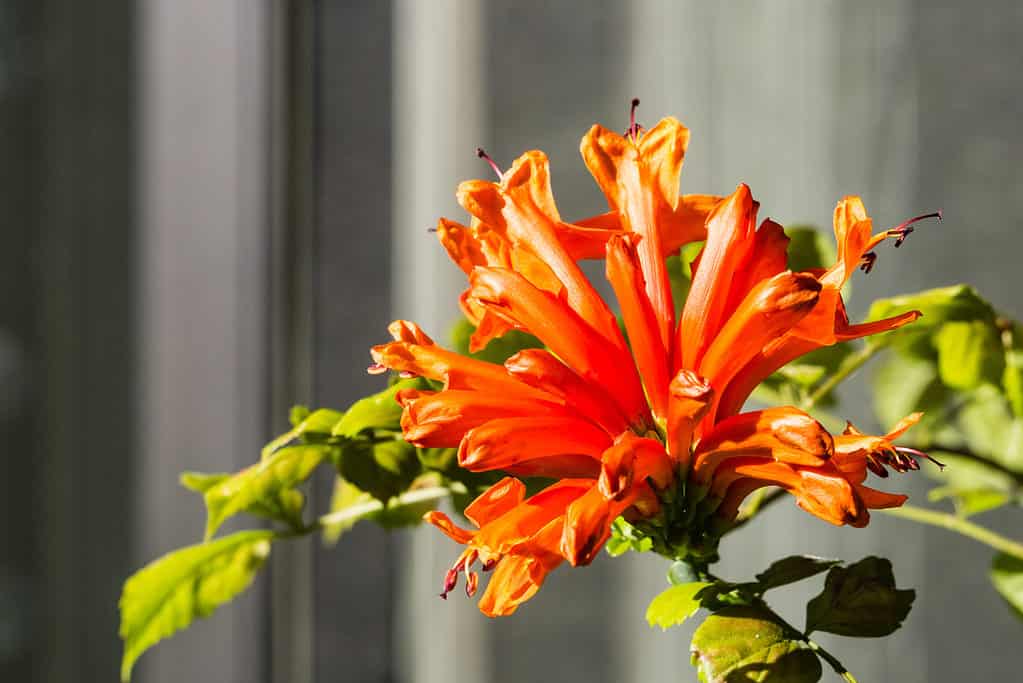
Cape honeysuckle may produce large flower clusters.
©iStock.com/Sundry Photography
The cape honeysuckle bonsai has vibrant, glossy green leaves that grow in pairs. The leaves are diamond shaped with serrated edges, growing 0.75 and 2 inches long. The flowers may vary in color, based on the particular species, ranging from vivid orange to light corals, pinks, yellows, and reds. The plant grows pod fruits that house the tiny seeds.
Origins and History of Cape Honeysuckle
Cape honeysuckle is native to South Africa but has been exported and cultivated around the world for ornamental purposes. In some locations such as Australia, New Zealand, and Cuba, it is actually considered an invasive species and may not be welcome as a bonsai plant.
Varieties of Cape Honeysuckle
There are three main varieties of cape honeysuckle: Aurea, Salmonea, and Coccinea. There are two, though, that are used in the bonsai art, the Cape honeysuckle Arizona and the Tecomaria cape honeysuckle.
Tecomaria Cape Honeysuckle
This variety is largely used as outdoor, living screens and decorative purposes. They’re often used as “fences” or hedge rows and ornamental trees. The tree is evergreen and lives well in warm climates not cooler and will lose its leaves in cold weather. The blooms on the Tecomaria is erratic but year-round when kept in warm enough temperatures.
Cape Honeysuckle Arizona
The variety of cape honeysuckle (Tacoma caopensis) is a desert region variety of the plant that tends toward a scrubby growth pattern. This tree has dark, thick leaves and vibrant orange flowers that bloom year-round when kept in warm enough temperatures. The tree is frost-hardy, though, but it shouldn’t be kept in temperatures lower than 28 degrees F.
Special Notes on Cape Honeysuckle
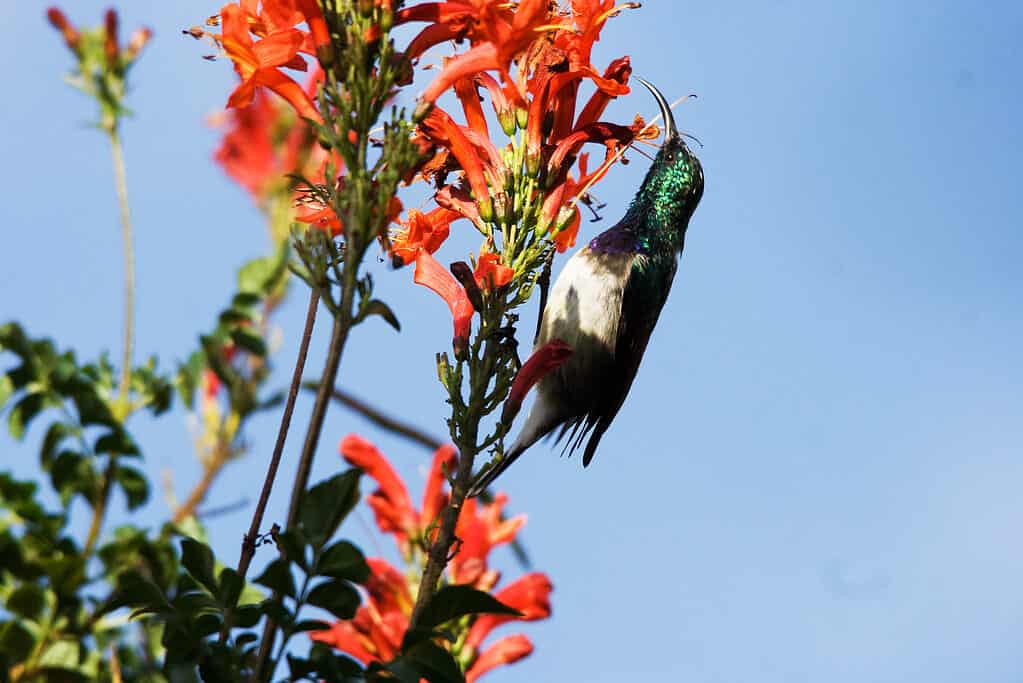
Cape honeysuckle attracts many pollinators.
©iStock.com/kobuspeche
There are many varieties of bonsai trees and they require different care guides. For Cape honeysuckle, care for the soil, lighting, temperature, and more to meet their needs.
Soil Needs
Cape honeysuckle aren’t terribly picky when it comes to their soil. The plant is tropical, though, so it will be best served with a pre-mixed 60 to 40 ratio of aggregate to organic matter designed for tropical plants. You can find the pre-mix soil at most gardening centers or online.
Planting Location
Cape honeysuckle bonsai thrive in sunlight but they do need some shade to help avoid their soil getting too dry. Too much shade is also a problem, however. So, the ideal location for your cape honeysuckle is placement in a location where it will be protected from high winds and too intense sun in hotter months, with mild to moderate shade, and plenty of sunshine the morning. Filtered sunlight is a great choice, as well, if you live in a hot climate.
If your area’s temperature gets below 25 degrees F, bring the cape honeysuckle bonsai indoors for winter months.
Lighting
Cape honeysuckle bonsai need plenty of bright, direct light but cannot tolerate intense shade.
In cooler climates, they should be places in full sunlight year-round, save on the most intense hot days. In hotter climates, keep them in locations with dappled sunlight or partial shade.
If the plant is growing indoors, ensure the plant has proper temperatures and direct light for much of the day. If naturally the windows don’t provide enough light, offer the cape honeysuckle bonsai LED grow lights with full spectrum.
Temperature
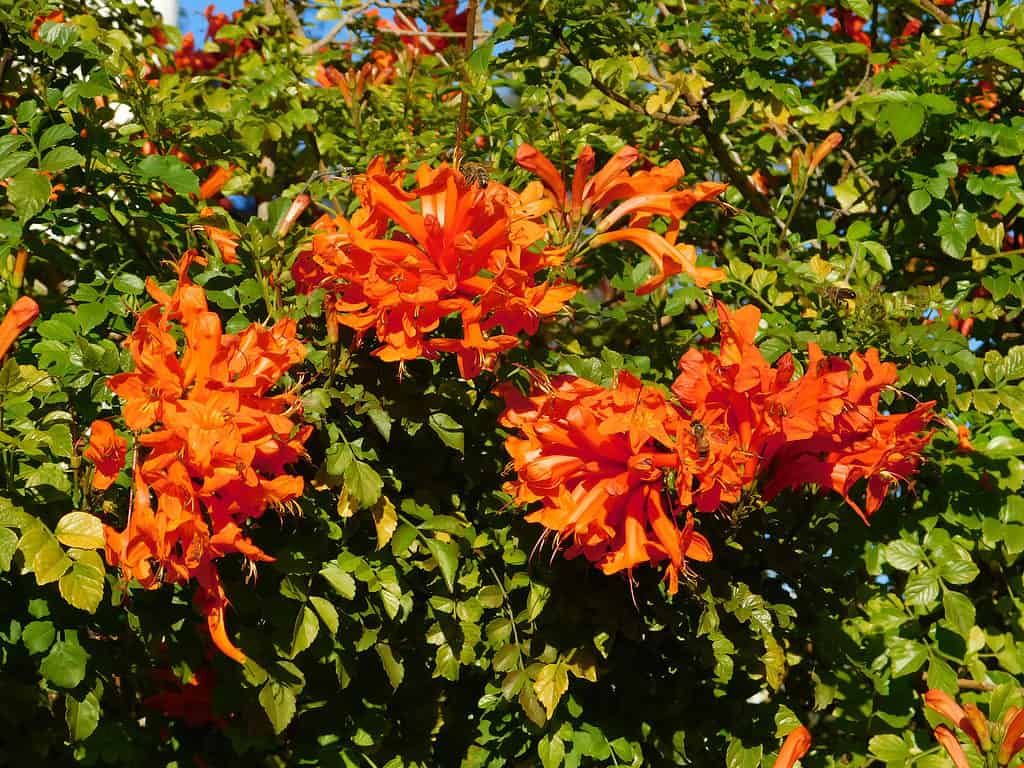
Cape honeysuckle grows in large shrubs when left natural.
©iStock.com/Konstantinos Livadas
Cape honeysuckle is a tropical tree that thrives outdoors in hardiness zones 9 to 11. They need temperatures above 25 degrees F.
Watering
Cape honeysuckle bonsai require the soil to remain moist for the majority of the time. They are slightly drought resistance, so they can tolerate going dry a little bit, but it’s best to prevent total dryness.
Feeding
For healthy leaf growth, use organic bonsai fertilizer for your cape honeysuckle. This is high nitrogen and phosphorous. This type of fertilizer should be used during growing season in the spring and summer. They should be fertilized at least once a month. Check the packaging for directions and follow, as needed.
Pruning, Shaping, and Wiring
Your cape honeysuckle should be pruned regularly with sharp, sterilized scissors of pruning shears. You can sterilize them by wiping the blades with rubbing alcohol.
Prune the cape honeysuckle bonsai to one pair of leaves to encourage thick foliage growth. For flowering, allow the bonsai to grow through bud development and blooming before trimming.
To train the cape honeysuckle, you’ll need to prune and wire the branches when they are young and pliable. Styles for cape honeysuckle are typically informal styles, including group plantings, cascade, semi-cascade, sweeping, and informal upright, among other informal styles.
Re-potting
Cape honeysuckle bonsai should be re-potted during early spring when they’re dormant. Prune the roots gently, cleaning them first with root rakes to gently remove soil. Re-pot with new, fresh soil that allows for proper drainage.
Common Problems of Cape Honeysuckle
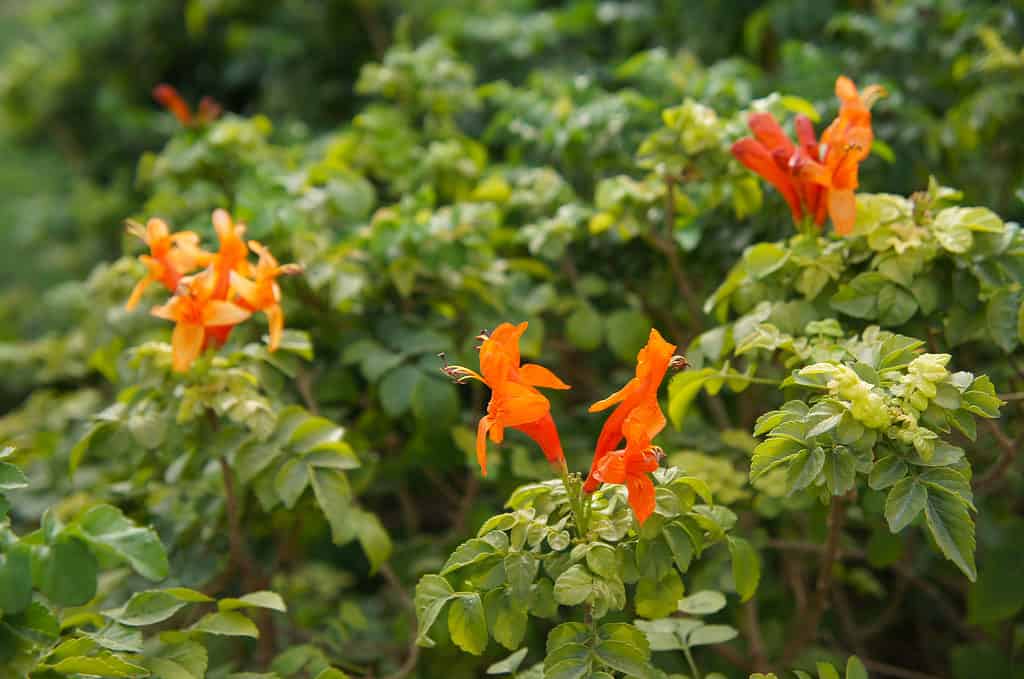
The plant often produces flowers in clusters like these.
©iStock.com/skymoon13
Some common issues arise for cape honeysuckle bonsai.
Leaf Burn
Also known as leaf scorch, leaf burn manifests as leaves turning yellow and then brown, starting at the tips of the leaves and spreading to the rest of the leaves. The leaves eventually turn black, shrink, and fall from the tree branches. This condition is started by frost, mineral or nutrient deficiencies, excessive sunlight, or over exposure to wind. Typically, the way to solve this issue is to check the plant’s location and rearrange the plant’s location to ensure it is protected from too much direct, hot sun and wind. If neither of these are the apparent issue, consider re-potting the bonsai to correct the soil needs.
Aphids, Mealy Bugs, Scale, and Other Insect Infestations
Most commonly, aphids and scale are found in cape honeysuckle bonsai. The tree will show signs of insect infestation by brown splotches, drooping leaves, deformation of the tree, or leaf drop. If scale is present, you’ll notice small brown to black bumps with “hard” shells that form on the trunk or branches. Sooty mold may also appear, thanks to the excretions of the insects.
With a hard spray of water on the upper and lower parts of the leaves to remove the insects. Then apply an insecticidal soap to kill the insects. Follow directions on the soap for full, proper care.
Fungal Infection
The other most common issue cape honeysuckle may face is fungal infection. This leads to brown blotches that spread throughout the leaves, turning them fully brown. To deal with this issue, trim the affected leaves and remove any fallen leaves. Sanitize any tools you have used on the bonsai plant to avoid spread through exposure.
Use copper spray or a gentle fungicide to treat the spots remaining on the plants and to prevent reinfection.
How to Propagate Cape Honeysuckle
There are three main ways to propagate cape honeysuckle. The first method of propagation through the dividing of the root ball. This should be done in early winter. Making green stem cuttings in early summer is the second option. The third is through planting seeds. The seeds should be harvested from the fruits (the pods) before they are naturally dispersed by the wind. The seeds should be planted in autumn or early spring.
Cape Honeysuckle Bonsai FAQs
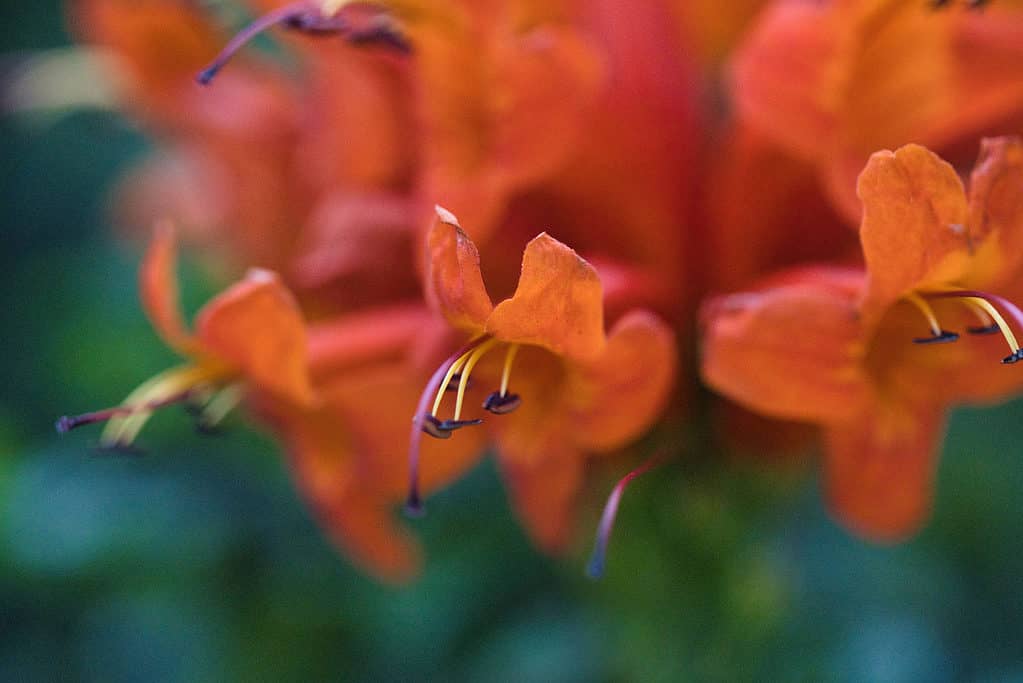
Close up of cape honeysuckle blooms
©iStock.com/Wirestock
Are cape honeysuckle fast growers when kept as bonsai?
The species is a fast grower, whether planted in the ground or in a pot. This means cape honeysuckle will grow quickly as a bonsai.
Is cape honeysuckle fragrant like other honeysuckle?
The Tecoma variety of cape honeysuckle isn’t fragrant, however the other species do smell nice like other varieties of honeysuckle.
Is cape honeysuckle an attractor for pollinator?
The cape honeysuckle has a sweet flower that attracts all sorts of pollinators, from bees to hummingbirds, moths, and butterflies.
My cape honeysuckle isn’t blooming. Why?
There are several reasons your cape honeysuckle bonsai might not be blooming.
- They are lacking in proper nutrients in their soil. To resolve this issue, consider re-potting the bonsai in fresh, nutrient rich bonsai soil.
- The soil got too dry between waterings. Check the soil for moisture and keep it moist.
- The tree has too little light.
- The tree has been too heavily pruned during the growing season, which keeps it from producing flowers.
- The cape honeysuckle isn’t mature enough yet to grow flowers.
- The tree has been over-fertilized and the plant is focused on growing leaves instead of flowers.
What if my dog or cat nibbles on the cape honeysuckle?
True honeysuckle is toxic for pets, but thankfully, cape honeysuckle is nontoxic for pets. Neither is toxic to humans.
My cape honeysuckle isn’t blooming. How do I get it to?
After ensuring your cape honeysuckle bonsai is in a warm enough climate, in enough light, protection from high winds and overly intense light, you may help the tree bloom. Feed the plant some bone meal that’s prepared for plants during the growing season. If the plant is healthy and receiving all it needs, it should bloom.
Up Next:
The photo featured at the top of this post is © iStock.com/Wirestock
Thank you for reading! Have some feedback for us? Contact the AZ Animals editorial team.






